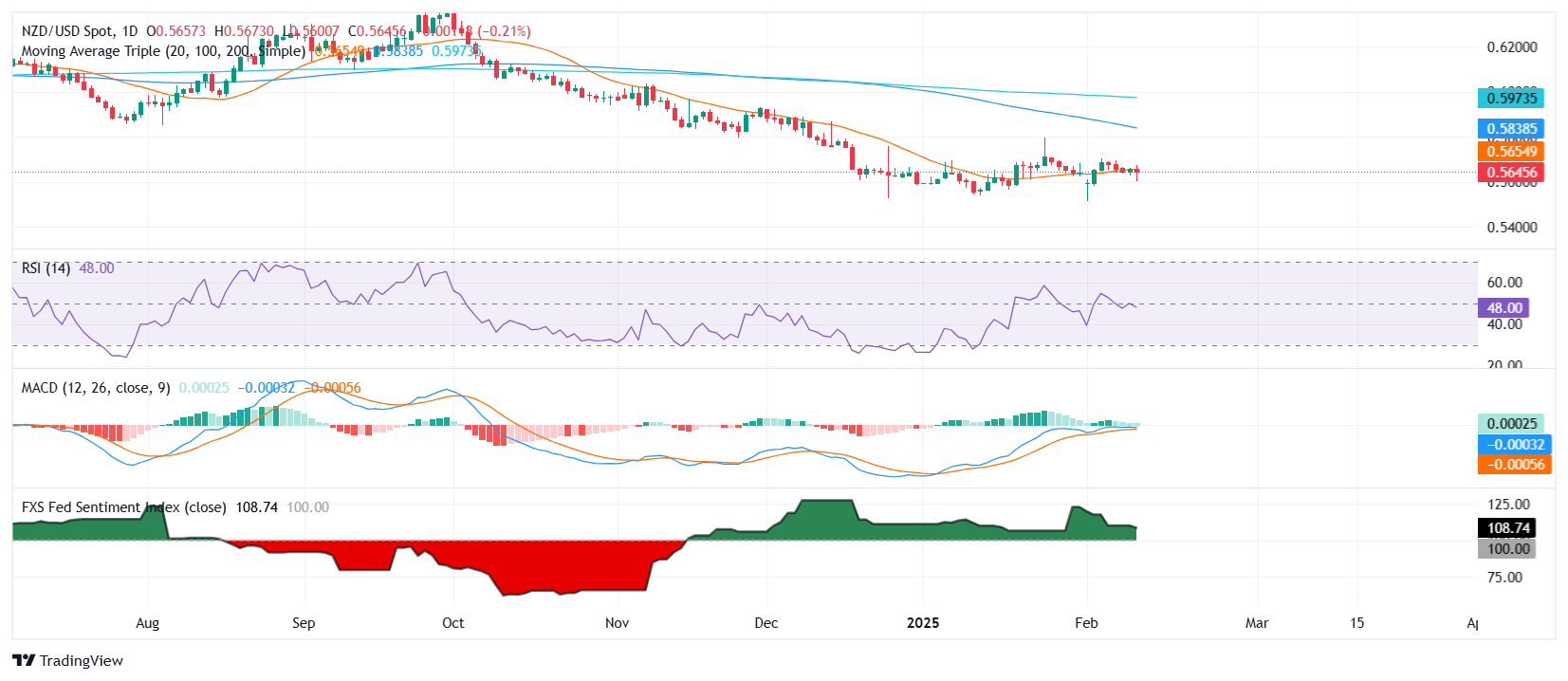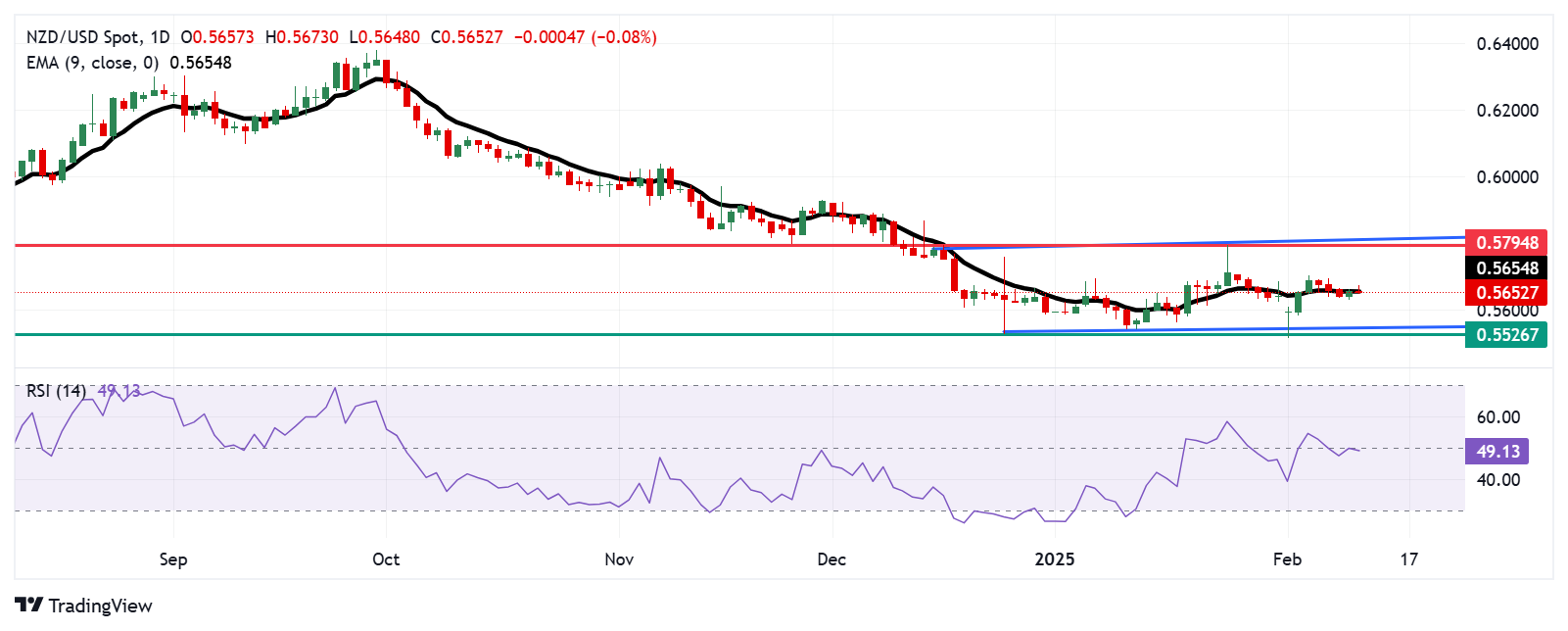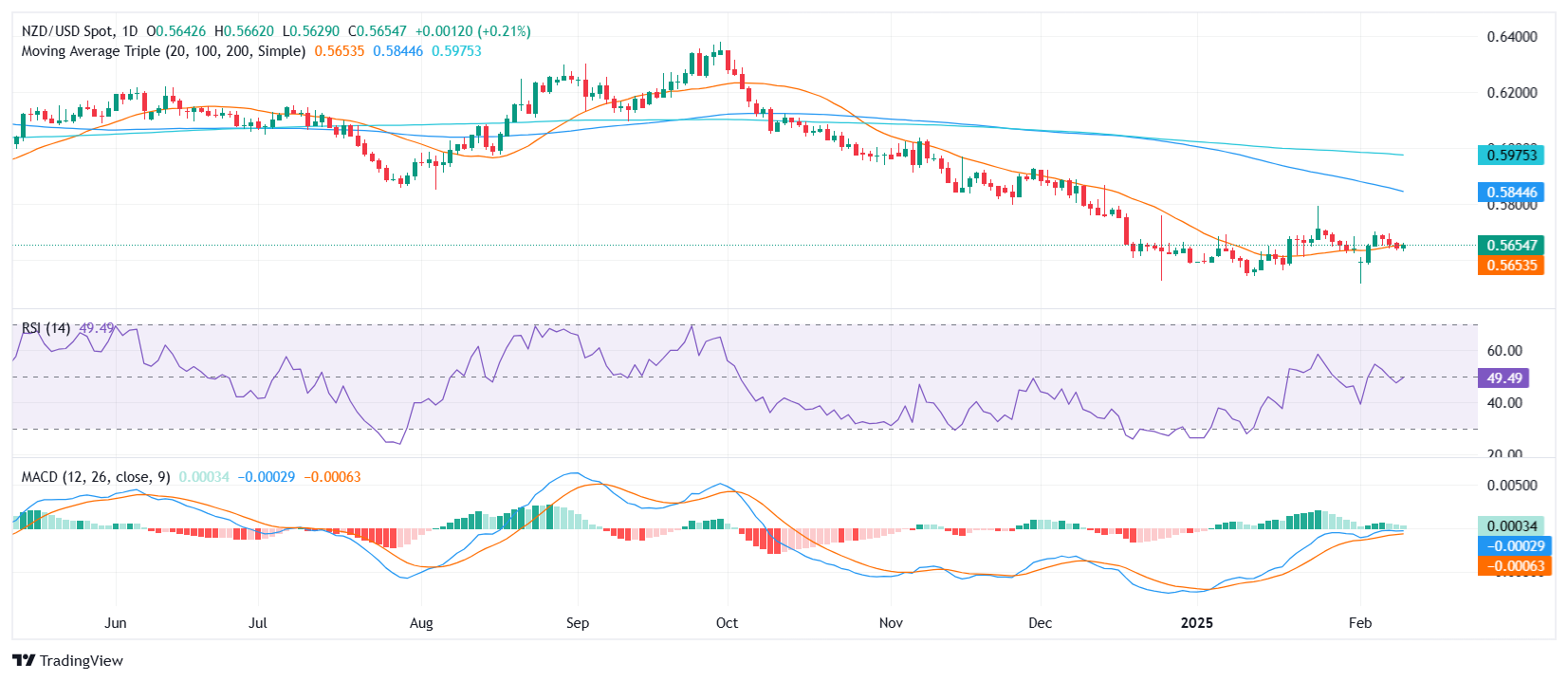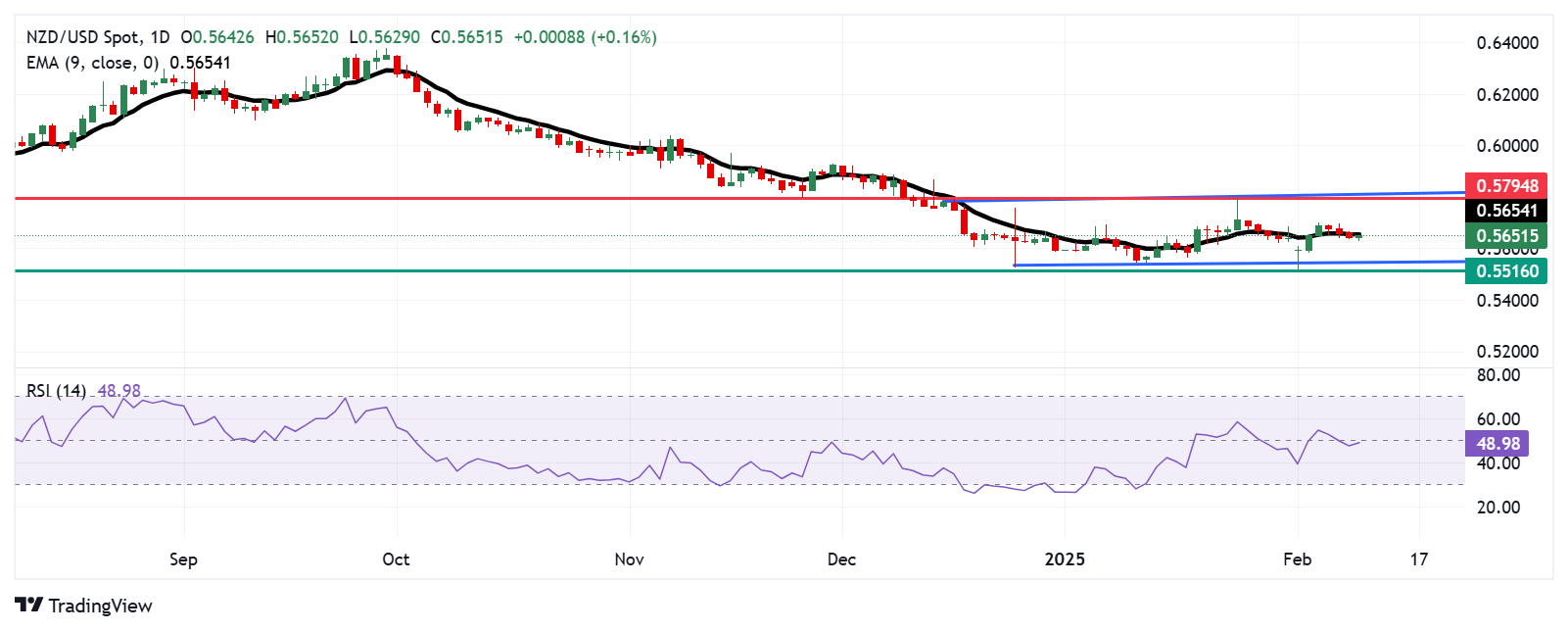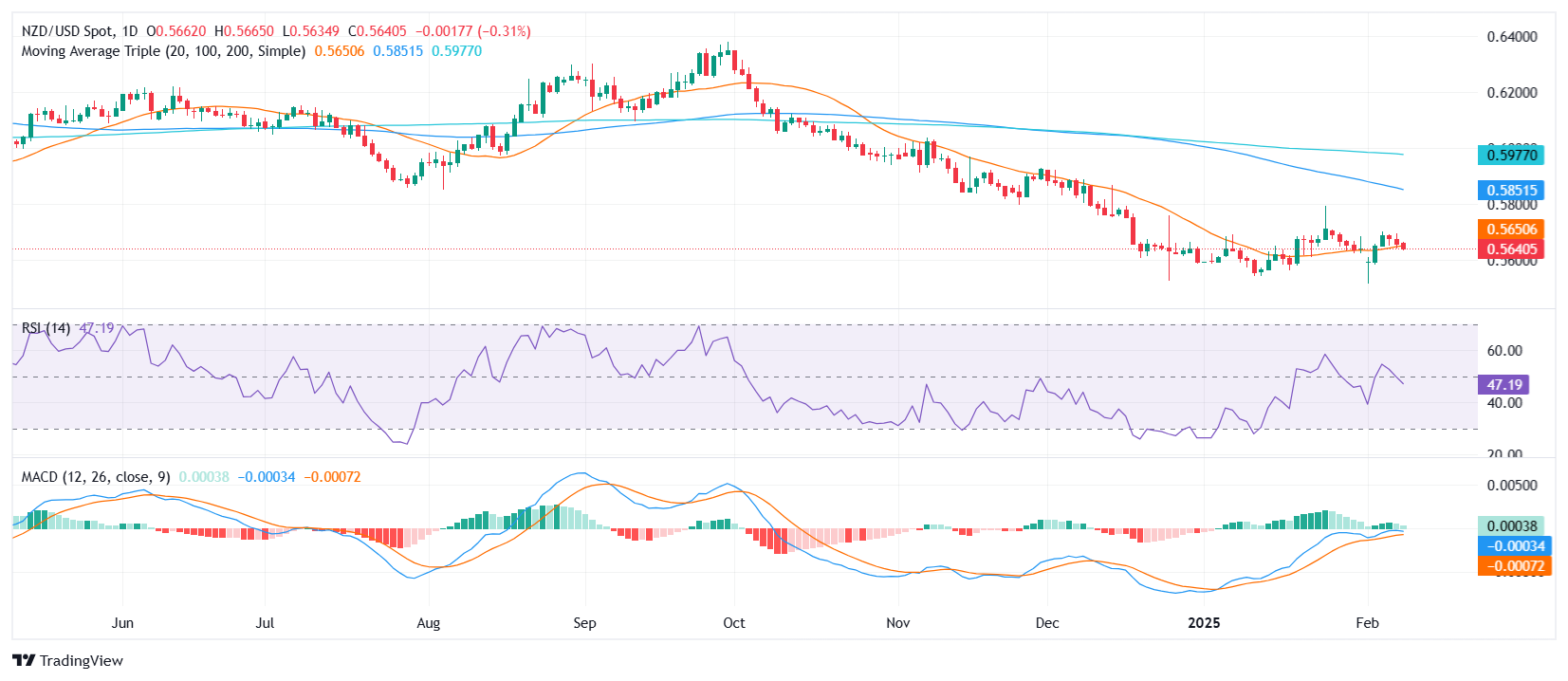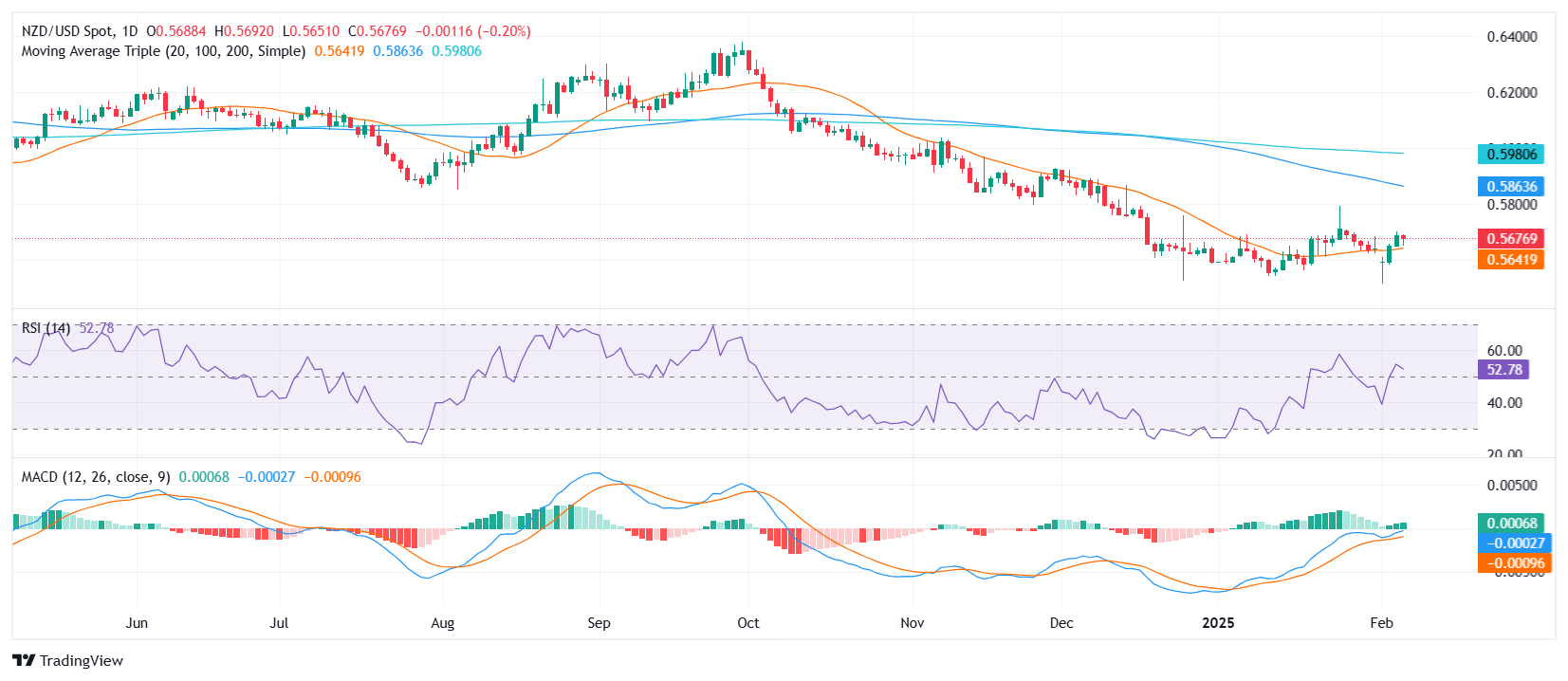- Analytics
- News and Tools
- Quotes
- Chart and quotes for NZDUSD
CFD Trading Rate New Zealand Dollar vs US Dollar (NZDUSD)
| Date | Rate | Change |
|---|
Related news
-
12.02.2025 22:10NZD/USD Price Analysis: Bulls struggle to hold key support as sellers resurface
- NZD/USD edges lower to 0.5650 on Wednesday, reversing Tuesday’s attempt to reclaim the 20-day SMA.
- Technical indicators signal waning momentum, with RSI declining and MACD showing neutral conditions.
- A decisive break below 0.5650 could reinforce bearish pressure, while buyers must defend this level to avoid deeper losses.
The NZD/USD pair saw mild losses on Wednesday, retreating to 0.5650 as selling pressure returned after Tuesday’s attempt to regain higher ground. The pair remains locked in a battle against its 20-day Simple Moving Average (SMA), a critical threshold that could determine the near-term outlook. A failure to hold above this level may open the door to further downside movement.
Technical indicators paint a cautious picture. The Relative Strength Index (RSI) is declining at 49, signaling growing selling interest, while the Moving Average Convergence Divergence (MACD) histogram remains flat with green bars, suggesting a lack of strong directional momentum. This combination indicates a market in consolidation, with neither bulls nor bears taking full control.
From a structural standpoint, 0.5650 serves as a pivotal level. A clear break below this threshold could pave the way toward 0.5600, while sustained buying above the 20-day SMA would be required for any meaningful bullish reversal, with initial resistance seen at 0.5685 and 0.5700.
NZD/USD daily chart
-
12.02.2025 09:00NZD/USD: Likely to trade in a 0.5640/0.5675 range – UOB Group
-
12.02.2025 08:12NZD/USD Price Forecast: Remains above 0.5650, resistance appears at nine-day EMA
-
12.02.2025 01:49NZD/USD posts modest gains above 0.5650, US CPI data looms
-
11.02.2025 21:44NZD/USD Price Analysis: Bulls attempt to reclaim 20-day SMA
-
11.02.2025 14:07NZD/USD flattens around 0.5650 as investors await Fed Powell’s testimony
-
11.02.2025 08:51NZD/USD: Likely to drift lower towards 0.5625 – UOB Group
-
11.02.2025 07:52NZD/USD Price Forecast: Finds immediate barrier at nine-day EMA near 0.5650
-
11.02.2025 01:26NZD/USD softens below 0.5650 as Trump tariff threat looms
-
10.02.2025 21:37NZD/USD Price Analysis: Pair struggles at 20-day SMA as selling pressure builds
-
10.02.2025 10:54NZD/USD: Expected to trade in a range between 0.5625 and 0.5680 – UOB Group
-
10.02.2025 07:29NZD/USD trades above 0.5650 after paring recent losses
-
10.02.2025 00:49NZD/USD seems vulnerable around mid-0.5600s amid US-China trade tensions
-
10.02.2025 00:49NZD/USD seems vulnerable around mid-0.5600s amid US-China trade tensions
-
07.02.2025 11:23NZD/USD: To rise gradually to 0.5725 – UOB Group
-
07.02.2025 07:48NZD/USD holds ground near 0.5700 ahead of US NFP
-
07.02.2025 07:02NZD/USD softens below 0.5700 ahead of US NFP release
-
07.02.2025 01:11NZD/USD gains traction above 0.5650 ahead of US NFP release
-
06.02.2025 21:41NZD/USD Price Analysis: Pair eases but holds firm above 20-day SMA
-
06.02.2025 10:43NZD/USD: Has a chance to edge above 0.5705 before levelling off – UOB Group
© 2000-2025. All rights reserved.
This site is managed by Teletrade D.J. LLC 2351 LLC 2022 (Euro House, Richmond Hill Road, Kingstown, VC0100, St. Vincent and the Grenadines).
The information on this website is for informational purposes only and does not constitute any investment advice.
The company does not serve or provide services to customers who are residents of the US, Canada, Iran, The Democratic People's Republic of Korea, Yemen and FATF blacklisted countries.
Making transactions on financial markets with marginal financial instruments opens up wide possibilities and allows investors who are willing to take risks to earn high profits, carrying a potentially high risk of losses at the same time. Therefore you should responsibly approach the issue of choosing the appropriate investment strategy, taking the available resources into account, before starting trading.
Use of the information: full or partial use of materials from this website must always be referenced to TeleTrade as the source of information. Use of the materials on the Internet must be accompanied by a hyperlink to teletrade.org. Automatic import of materials and information from this website is prohibited.
Please contact our PR department if you have any questions or need assistance at pr@teletrade.global.
